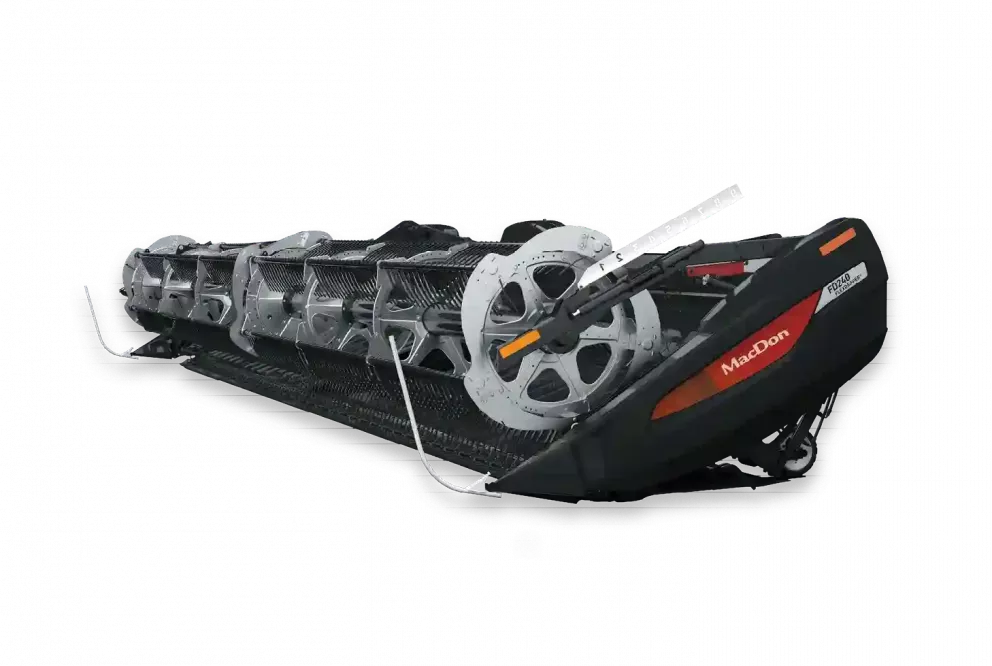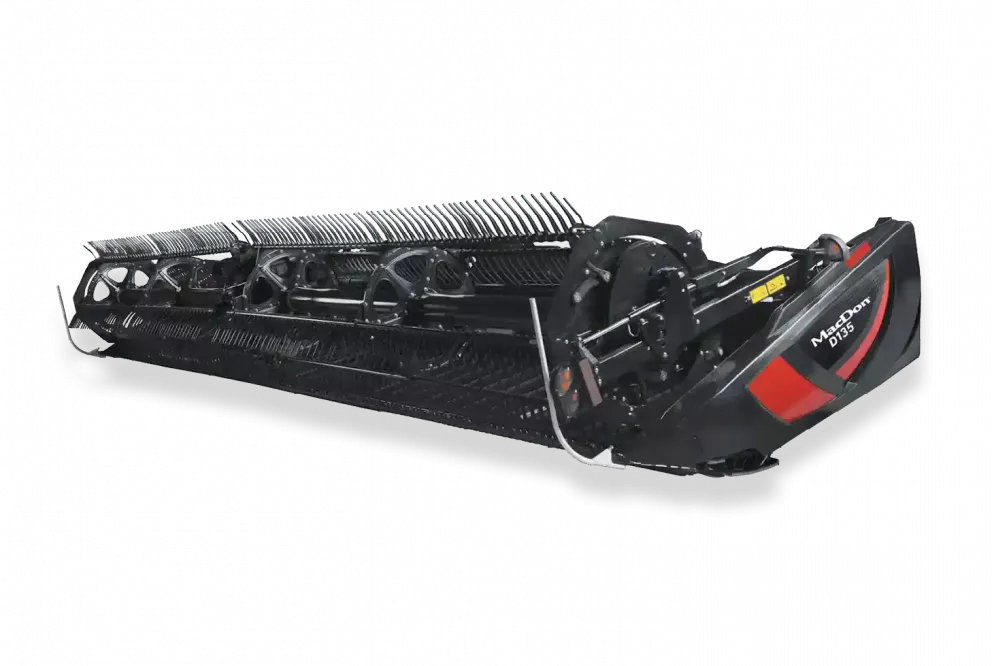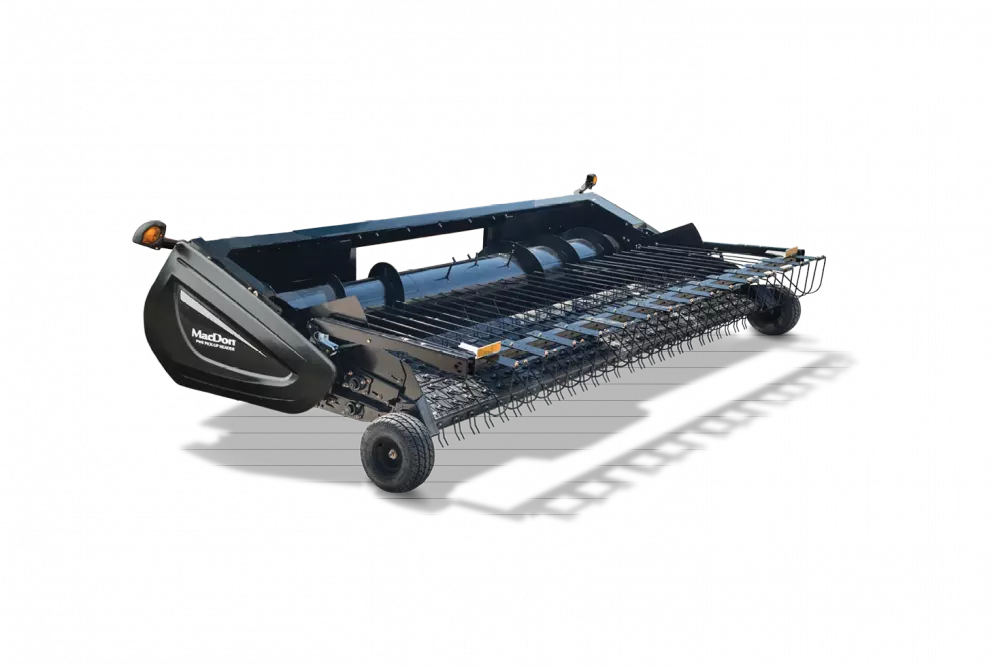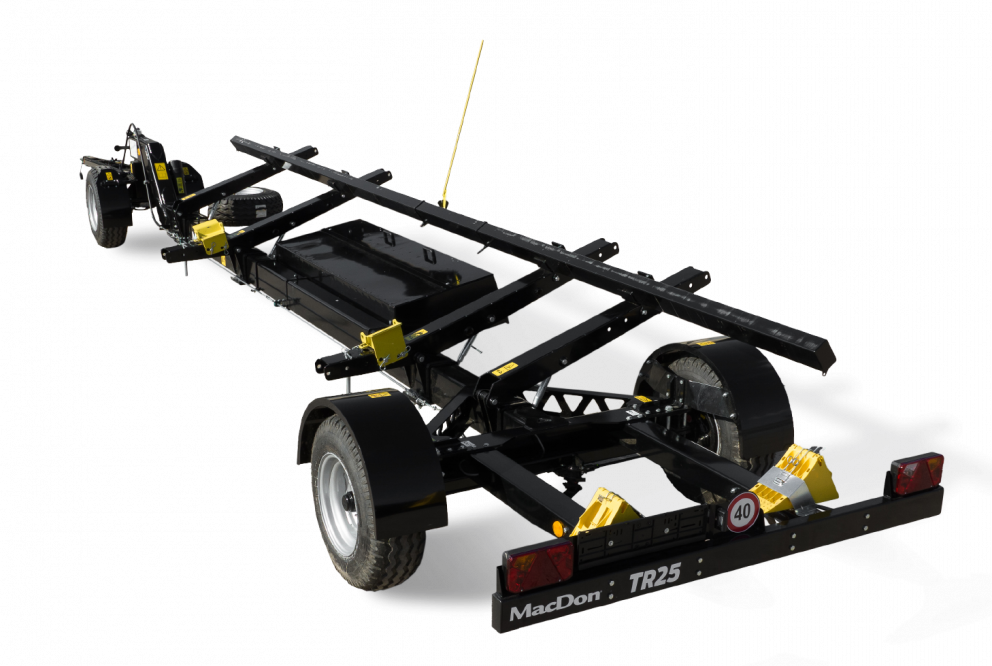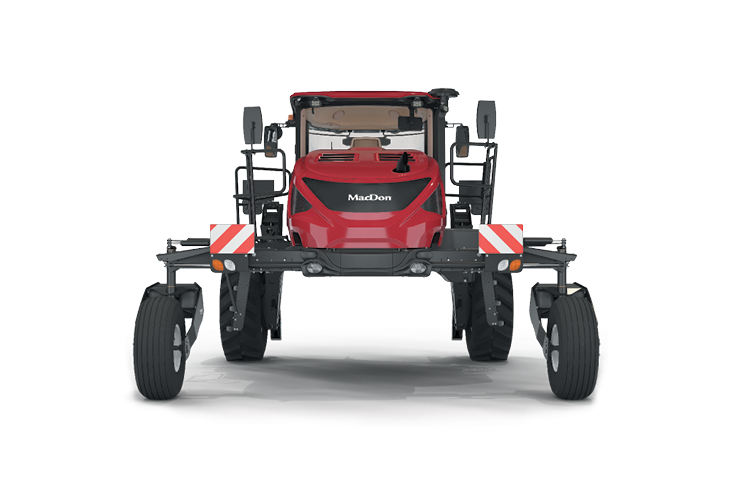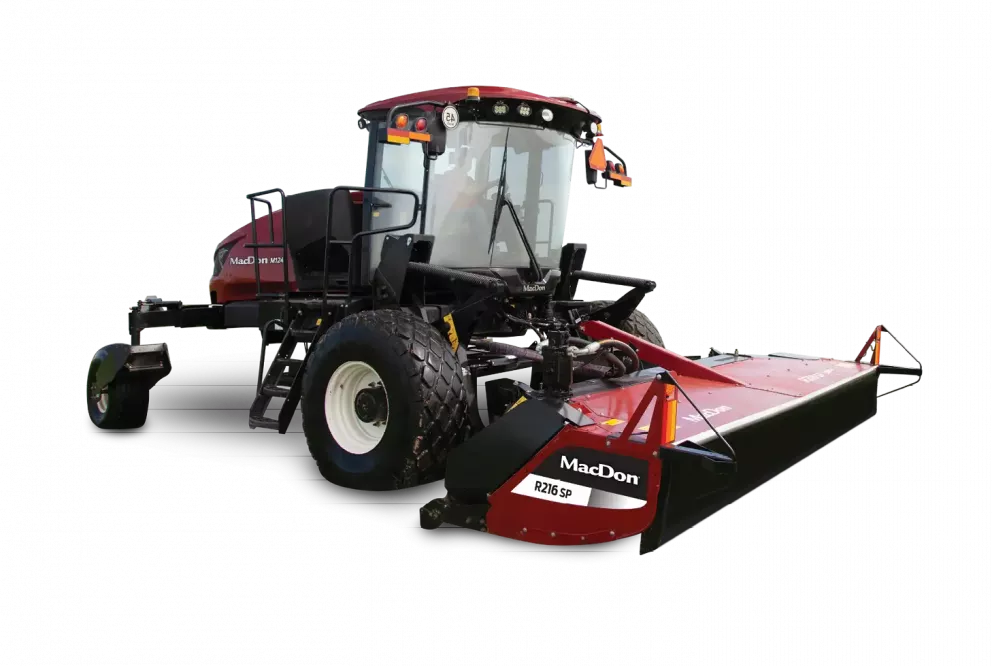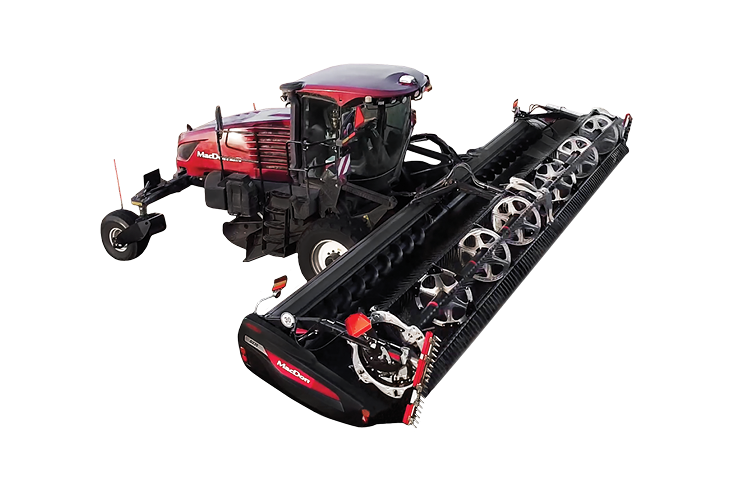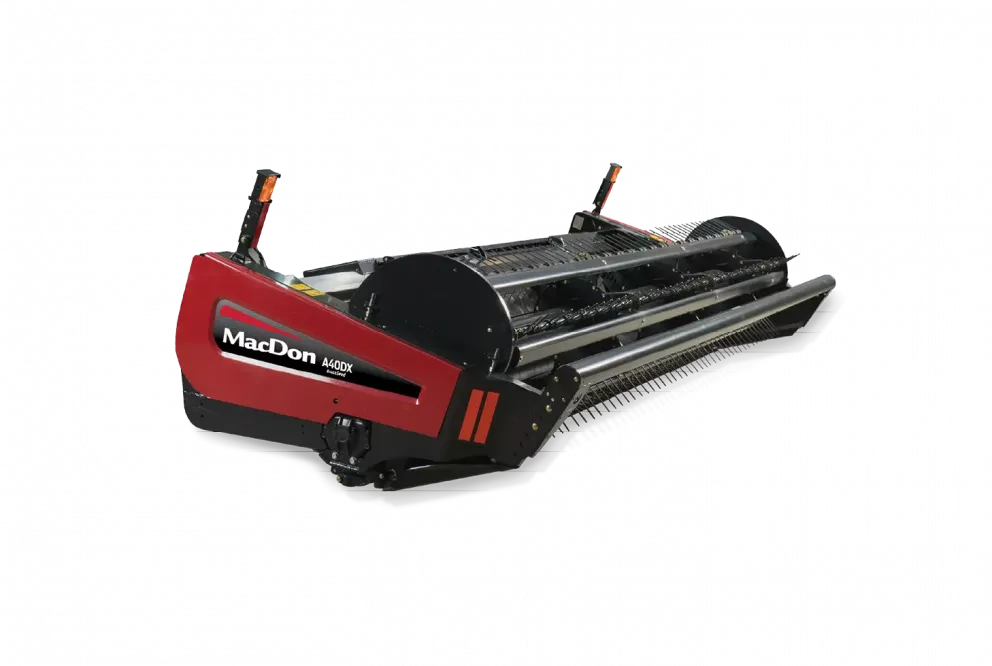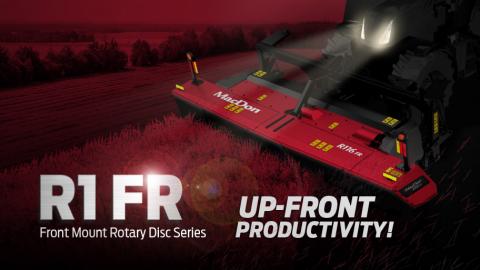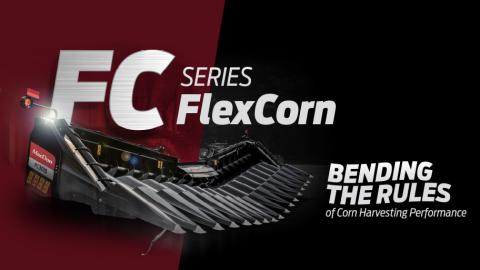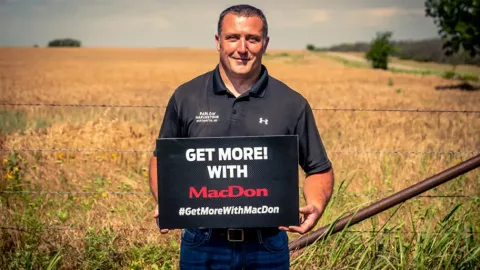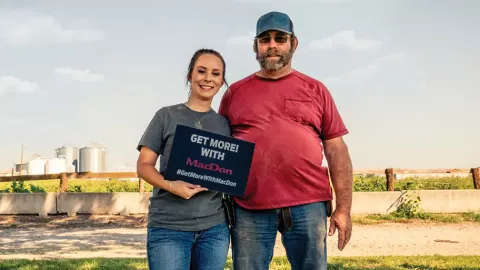Bruce Nelson
Future ag historians seeking to chronicle the FlexDraper revolution can be forgiven if they begin with the launch of MacDon’s 974 FlexDraper in 2003. But the story really starts more than a decade earlier with the frustrations of Bruce Nelson, and his constant badgering of MacDon to develop a draper header that could harvest his soybeans.
Nelson, a former custom cutter who currently farms about 7,500 acres near Clark, South Dakota, says he remembers back in the early 90s, how much he detested cutting soybeans with the flex auger platforms that were available at the time.
“We were just massacring fields and wasting a lot of crop. From extensive auger shelling and our inability to cut cleanly, to beans always falling off the cutterbar, our equipment back then was just awful.”
But then Nelson had a stroke of inspiration; why not try his MacDon draper header that he used for wheat in his soybeans? His experiment was an instant success - all of the cutting, shelling, and feeding issues that were common with his regular flex auger platform disappeared. The only problem was he couldn’t keep the header out of the dirt. If only MacDon could build a draper capable of following the contours of his ground, his soybean harvesting problems would be solved.
Thus started Nelson’s one-person campaign to convince MacDon to develop such a product.
“Back in the mid-90s, Gary MacDonald and others from MacDon would make a trip every summer down to the wheat harvest in Kansas. They would stop into the field to see how we were doing, and I would always tell them, ‘guys we need to make these things cut beans.’ I would also bring the topic up every time I saw them at harvest conventions or anywhere else. I just kept pestering them.”
IT’S MIND-BOGGLING TO ME WHAT HE DID. I KNOW THE THEORY BEHIND IT, BUT TO THIS DAY, I STILL DON’T UNDERSTAND HOW HE MADE IT WORK.
The first hint that Nelson’s nagging was beginning to pay off happened when Karl Klotzbach showed up on his farm one fall with MacDon’s new 972 Harvest Header.
“At the time, MacDon was pretty sure that the 972 was the be-all-end-all header forever. We put that header on my combine and went to the soybean field, but it was just too heavy; we could not keep it out of the dirt and mud. It became painfully obvious to Karl that it wasn’t going to work.”
“I think MacDon kind of threw up their hands and didn’t think much more of it, but then I started mucking around with my 962s, trying some different things like crop lifters with some success. I even came up with something I called a baby flex sickle that took advantage of the header’s existing flotation.”
Soon after, Nelson had the chance to share his ideas with MacDon when he was invited up to Winnipeg to talk harvesting with MacDon’s engineering staff.
“I’m guessing it was the spring of ’97 or ’98 that MacDon brought two of my guys and me up to Winnipeg. I can’t remember who all was there, Gary MacDonald, Tom Fox, Frank Talbot – it was quite a room full of people. We got up in front of them and talked header problems and stuff, and never really talked about soybeans until the last five minutes. That’s when we showed them this cheesy little video we had made showing our existing soybean header and the problems we saw, and the solution that I had come up with.”
Nelson says that even though his sickle idea was quickly dismissed because it would never withstand the rigors of a sickle moving back and forth hundreds of times a second, he must have got the company’s attention because that fall Tom Fox brought down a production 972 that he had “tweaked on a little bit” to try in his soybeans.
“He had cut the center of the cutterbar loose and made a little fulcrum thing on the adapter to kind of support it. That’s where the idea of using the header’s weight to support another piece of the header came from.”
The tweaked header was still nowhere near the solution, but MacDon had shown that it had listened and was working on the problem.
“About a year after that Karl Klotzbach calls and said ‘we have something coming but can’t get there this fall; can you leave us 50 acres of beans to harvest in the spring and we’ll buy them from you?’”
“That was the first time I saw the three-piece frame. Frank Talbot had brought the header down, and I thought he was nuts and didn’t think that it would work at all. The test was a big deal too because Case was involved, and they had brought one of their combines with their existing flex head. I remember the conditions being extremely horrible. It was muddy, and we were constantly getting stuck, but they saw enough to say we have got something here. That was not the eventual FlexDraper concept, but it was pretty close to it, and that all took place on my farm here.”
Over the next several years, Nelson would enjoy a front row seat to the evolution of the FlexDraper concept.
“The first three-piece platform I saw had big coil springs on the side of the header to support the wings. Version two had airbags, then Roger Patterson took Tom Fox’s idea of using the mass of the header to support another part of the header and came up with the linkage that we have today.”
“It’s mind-boggling to me what he did. I know the theory behind it, but to this day, I still don’t understand how he made it work. I mean he’s got fulcrums and pivot points; it’s just extremely impressive and really cool what he came up with. It’s a masterpiece of engineering.”
Today, Nelson downplays his role in bringing about the FlexDraper and remains convinced that only MacDon could have invented the concept.
“I don’t want to take any credit because it was just stubbornness on my part to get MacDon working on the problem. No other OEM was ever going to tackle it because they were either content with what they had, or simply didn’t have the vision or the time to pursue it.”
“The thing that has been most refreshing through my long history with MacDon is that they have been the only manufacturer to take an active interest in what you were saying. They welcomed input from guys like me and treated you like an equal. That attitude has been unique in my entire career.”
For Nelson, MacDon’s willingness to listen, as well as its commitment to the kind of extensive R&D that he experienced on his farm, is the secret behind the company’s ability to produce products that deliver real value to the farmer.
“From day one I’ve been impressed by the many little clever ideas MacDon incorporates into their equipment – how they route stuff, how they engineer stuff. But I think the thing that gets lost most in any header discussion is the longevity of their products. These things just run, and they will run a long time without a lot of maintenance and upkeep. They will still be performing the same after 25,000 acres as the first day they were put in the field. That’s just good design.”
While Nelson remains humble about his part in the FlexDraper story, he says that he appreciates being involved in the development of a product that has already helped a lot of farmers.
“MacDon has been so good to me over the years, and it’s just a pleasure to have been part of developing the FlexDraper, and maybe help a little bit. The product has truly revolutionized soybean harvesting, particularly in the way that soybeans and peas have now gone all through the upper Midwest and into Canada. That would never have happened without the FlexDraper. I know that’s a pretty strong statement, but I would back that up whole heartedly, because it would have been pretty hard to do with the flex heads we had before MacDon came along.”
